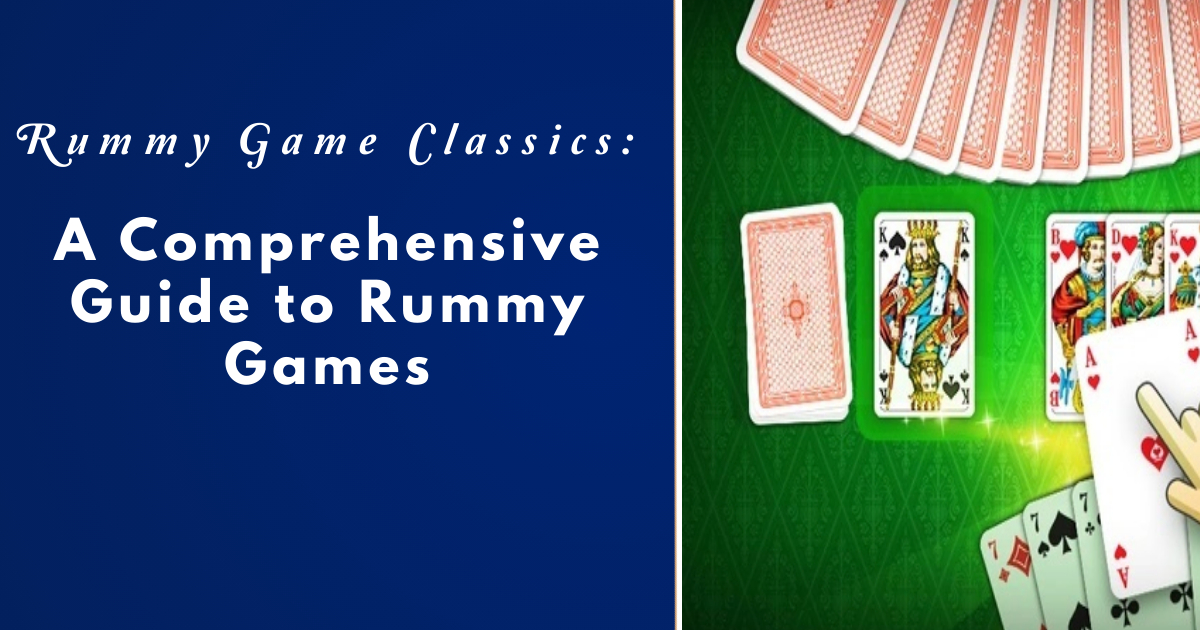Rummy Game Classics: A Comprehensive Guide to Rummy Games
Rummy games have endured through generations, captivating players with their blend of strategy, skill, and a hint of luck. From casual family gatherings to competitive tournaments, rummy games hold a special place in the world of card gaming. This comprehensive guide delves into the rich tapestry of rummy games, exploring their origins, rules, variations, and strategic nuances.

Origins and History of Rummy Game
The roots of rummy games can be traced back centuries, evolving from early card games in Asia and Europe. The exact origins are shrouded in history, but rummy, including Teen Patti, as we know it today likely emerged in the mid-19th century United States. Its popularity surged across continents, with each region adding unique twists and rules to create distinct variants such as Gin Rummy, Indian Rummy, and Canasta.
Rules and Gameplay Basics
At its core, Indian rummy games share fundamental gameplay mechanics. Players aim to form sets or runs of cards, typically melding them into sequences or groups. A set consists of cards of the same rank but different suits, while a run comprises consecutive cards of the same suit. The objective varies from game to game, ranging from forming specific combinations to achieving the lowest score possible.
Popular Variants
- Gin Rummy: A two-player game where players aim to form sets or runs before their opponent, often involving strategic discards to minimize points.
- Indian Rummy: Widely played in South Asia, this variant involves forming sequences and sets to declare before opponents, combining skill and calculation.
- Canasta: Known for its unique melding rules and emphasis on forming large sets, Canasta is often played in teams and rewards strategic planning.
- Rummy 500: A variant popular in North America, where players aim to reach 500 points by melding and laying off cards strategically.
Strategy and Skills
Mastering rummy requires a blend of strategic planning, card counting, and adaptability. Players must assess their hand quickly, deciding whether to go for high-value sets or low-value runs based on the game’s objective. Understanding probability and keeping track of discarded cards can give players a crucial edge in anticipating opponents’ moves and adjusting their strategies accordingly.

Competitive Play and Tournaments
Beyond casual play, rummy games thrive in competitive settings and online tournaments. Players showcase their skills in structured formats, competing for prestige and prizes. Tournaments often feature different variants and formats, testing players’ adaptability and consistency across multiple games.
Cultural Impact and Social Aspect
Rummy games transcend cultural boundaries, serving as a common social activity in many countries. They bring families and friends together, fostering camaraderie and friendly competition. Whether played at home, in clubs, or online communities, rummy games create opportunities for bonding and shared experiences.
Online and Mobile Gaming
In the digital age, rummy has found a vibrant online presence. Platforms and apps offer players the chance to enjoy their favorite variants anytime, anywhere. Online gaming provides access to a global player base, diverse game formats, and varying skill levels, catering to both casual players and serious enthusiasts alike.
Conclusion
Rummy games continue to enchant players worldwide with their timeless appeal and strategic depth. Whether you’re a novice exploring the basics or a seasoned player honing your skills, the world of rummy offers endless opportunities for enjoyment and mastery. Embrace the challenge, learn the variants, and discover why rummy remains a beloved classic in the realm of card games.








